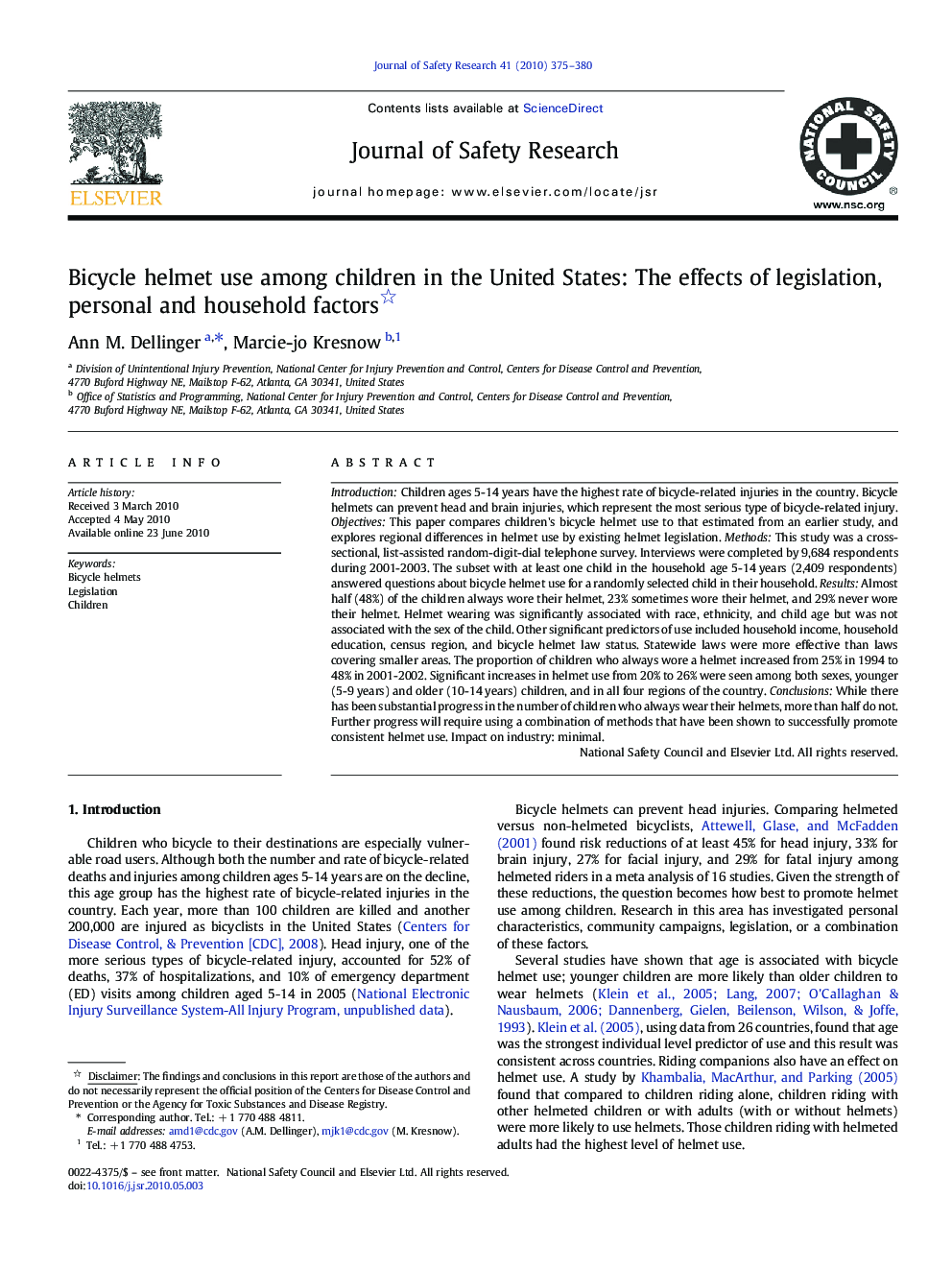| Article ID | Journal | Published Year | Pages | File Type |
|---|---|---|---|---|
| 587812 | Journal of Safety Research | 2010 | 6 Pages |
IntroductionChildren ages 5-14 years have the highest rate of bicycle-related injuries in the country. Bicycle helmets can prevent head and brain injuries, which represent the most serious type of bicycle-related injury.ObjectivesThis paper compares children's bicycle helmet use to that estimated from an earlier study, and explores regional differences in helmet use by existing helmet legislation.MethodsThis study was a cross-sectional, list-assisted random-digit-dial telephone survey. Interviews were completed by 9,684 respondents during 2001-2003. The subset with at least one child in the household age 5-14 years (2,409 respondents) answered questions about bicycle helmet use for a randomly selected child in their household.ResultsAlmost half (48%) of the children always wore their helmet, 23% sometimes wore their helmet, and 29% never wore their helmet. Helmet wearing was significantly associated with race, ethnicity, and child age but was not associated with the sex of the child. Other significant predictors of use included household income, household education, census region, and bicycle helmet law status. Statewide laws were more effective than laws covering smaller areas. The proportion of children who always wore a helmet increased from 25% in 1994 to 48% in 2001-2002. Significant increases in helmet use from 20% to 26% were seen among both sexes, younger (5-9 years) and older (10-14 years) children, and in all four regions of the country.ConclusionsWhile there has been substantial progress in the number of children who always wear their helmets, more than half do not. Further progress will require using a combination of methods that have been shown to successfully promote consistent helmet use. Impact on industry: minimal.
